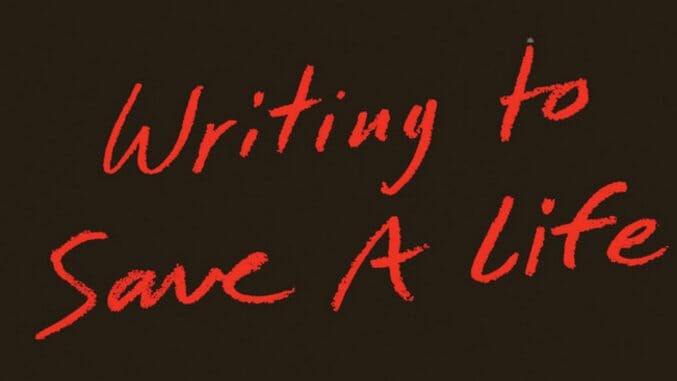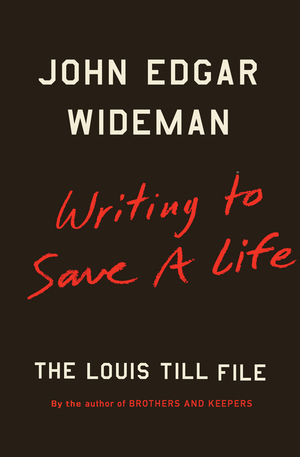John Edgar Wideman Investigates Louis Till’s Execution in Writing to Save a Life

Emmett Till, a black teenager from Chicago, was brutally beaten, murdered, and dumped in a river for allegedly whistling at a white woman in 1955 Mississippi. After his mother insisted on a public, open-casket funeral—and horrifying images of his bloated face made national news—his death became a catalyst for the Civil Rights movement over the next decade.
Rosa Parks initiated the Montgomery bus boycott 100 days after Emmett Till’s murder. African-American college students who launched the sit-in movement at a segregated lunch counter in Greensboro, North Carolina described themselves as “the Emmett Till generation.” In the midst of the Albany, Georgia Desegregation movement of 1961-62, Rev. Samuel Wells declaimed, “I can hear the blood of Emmett Till as it calls from the ground!” In the Freedom Summer of 1964, as black Student Nonviolent Coordinating Committee (SNCC) leaders trained northern white undergrads for the harrowing rigors of black voter registration in Mississippi, a young white woman asked for SNCC’s policy on interracial dating. “Policy?” a SNCC organizer replied. “You’re going to Mississippi. Have you heard of Emmett Till?”
Sixty years after his death, Emmett Till’s name still haunts this country. We see it in chilling images of the Emmett Till memorial sign in Mississippi riddled with bullets. It surfaces in op-eds on young black shooting victims like Tamir Rice and Trayvon Martin. His name was invoked by Yusef Salaam, one of the exonerated Central Park Five, with regard to his fate had he been delivered to vigilante justice at the urging of the current President-elect of the United States. It appeared in the deck of a Slate column published on the morning after Election Day 2016: “We are still the country that killed Emmett Till.”
The last two years have yielded noteworthy histories of the Emmett Till case: Devery Anderson’s Emmett Till: The Murder That Shocked the World and Propelled the Civil Rights Movement (2015) and Timothy B. Tyson’s forthcoming The Blood of Emmett Till. Sandwiched between these two historical studies is a more introspective book, Writing to Save a Life: The Louis Till File, by two-time PEN/Faulkner award-winning novelist and memoirist John Edgar Wideman. Writing to Save a Life navigates a looping course between investigation, imagination, confession, and memoir.
Louis Till, Emmett Till’s father, appears only briefly in the Emmett Till story. He separated from Emmett’s mother, Mamie Till, after assaulting her shortly after Emmett was born. To avoid criminal charges in Chicago, he joined the segregated U.S. Army to fight in World War II. Twenty-three-year-old Louis Till was executed in Italy in 1945, convicted by court-martial of raping two Italian women and murdering a third.
Unknown throughout the trial of Emmett Till’s murderers (both acquitted), Louis Till’s military record was later declassified during the push to try the murderers on kidnapping charges. Its ugly revelations dampened the public outcry for justice, and the second trial never happened.
In Writing to Save a Life, Wideman secures access to the Louis Till file, beginning an investigation that takes him not only into the unequal justice of the Jim Crow army, but to Louis Till’s grave in France and deep into imagined scenes of the Till family—and meditations on Wideman’s own family. The Louis Till file drives Wideman’s personal struggle to understand why he’s so intent on redeeming a violent young man who might have been wrongly convicted…or might have been the rapist and murderer his accusers claimed he was.
Paste chatted with Wideman about Writing to Save a Life, the experiences of African-American men during WWII, and why understanding Louis Till’s story is crucial today.
![]()
Paste: When I first read about Louis Till, I didn’t think I wanted to know more about him. He’s barely a footnote to the story of Emmett Till. In terms of your own efforts to get at this story, why focus on him?
 John Edgar Wideman: I didn’t know anything about Louis Till either. I had a horrendous encounter with the photographs of Emmett in 1955, and I never gave a thought to his father at that point. Nor did I give much of a thought to his father for decades after that.
John Edgar Wideman: I didn’t know anything about Louis Till either. I had a horrendous encounter with the photographs of Emmett in 1955, and I never gave a thought to his father at that point. Nor did I give much of a thought to his father for decades after that.
-

-

-

-

-

-

-

-

-

-

-

-

-

-

-

-

-

-

-

-

-

-

-

-

-

-

-

-

-

-

-

-

-

-

-

-

-

-

-

-








































